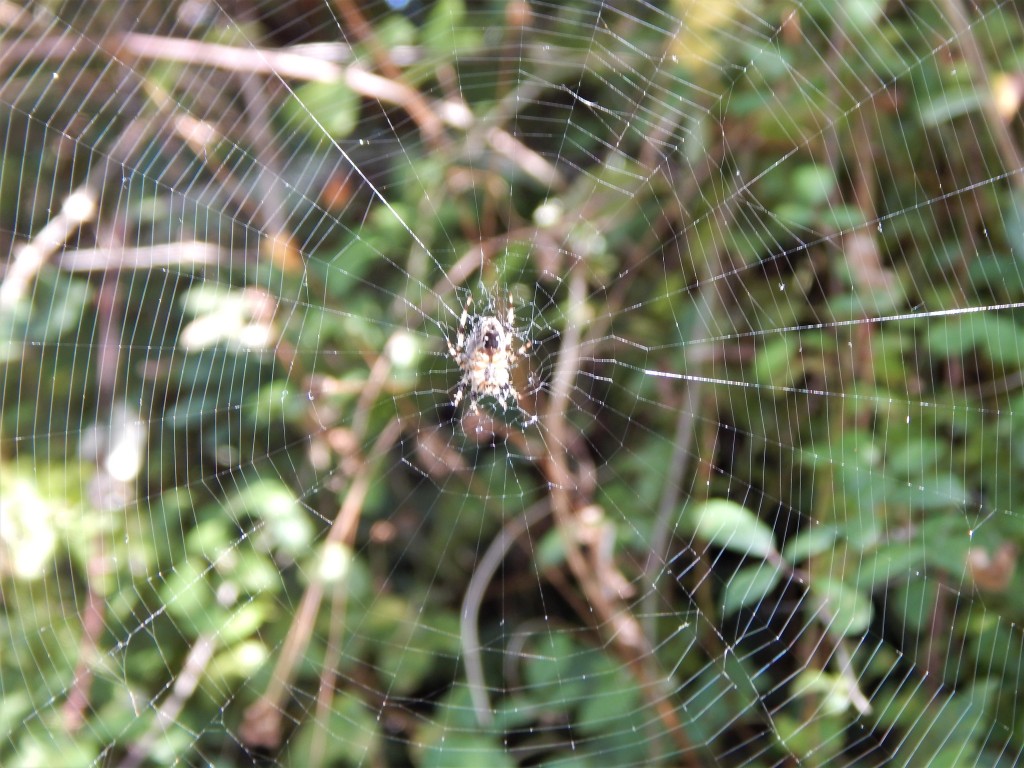
[030] Araneus diadematus, Garden Spider
Introduction
Araneus diadematus, the Garden Spider, is a common spider often found in gardens waiting in the middle of its web.
Although it is widespread through Europe and North America, there is another species called the Garden Spider in America, so sometimes we call it the European Garden Spider to be more precise.
Its other names include diadem spider, cross spider, crowned orb-weaver, orangie and pumpkin spider. By now it should not surprise you that it is not the only pumpkin spider (but it does look a bit like a pumpkin.)
Taxonomy
Kingdom – Animals
Phylum – Arthropods
Class – Arachnids (Eight-legged, mostly spiders)
Order – Araneae (Spiders)
Family – Araneidae (Orb-weavers)
Genus – Araneus
Scientific Name – Araneus diadematus
Name
There are no prizes for guessing why it is called a Garden Spider. The word ‘spider’ comes through Old English from old German roots, cognate with ‘spinner.’
The name of the Genus and its Family and Order come from the Latin for spider and the more general term for the Order, Arachnids, comes from the Ancient Greek for spider.
The name, diadem spider and diadematus in the Scientific Name refer to its appearance.
Spiders
As this is our first spider, I will give some general notes about them and will work my way down the taxonomic tree.
Arthropods are a major group at the Phylum level. They have jointed bodies and a hard cuticle or exoskeleton. They include crustaceans (lobsters, crabs, shrimp etc. and woodlice); Myriapods (millipedes and centipedes); Insects and Arachnids
The Class of Arachnids is mostly Spiders but also includes scorpions, ticks, mites, camel spiders and harvestmen, which we will not meet in this blog. [Sorry, we do have British harvestmen but they didn’t make it.]
Although there are some similarities, spiders are quite different to insects. They have eight legs and a body with just two main parts – sometimes called the cephalothorax and abdomen. Because the internal organs are shuffled round a bit, we should actually call these the prosoma and opisthoma!
They don’t have antennae but they do have a pair of chelicerae and a pair of pedipalps at the front of the head. Chelicerae are modified mouthparts which can be used to inject venom. Pedipalps have a number of functions including taste and smell and are used by male spiders in courtship and mating.
Spiders usually have eight eyes, arranged differently for each Family of spiders. They have spinnerets to produce silk and mostly catch prey to eat. Not all spiders make what we think of as spiders’ webs.
Description
I am not a great fan of spiders but Araneus diademata can be quite attractive. Its colour has a variety of shades from light brown through bright orange to a darker grey. All have the same lighter markings including an obvious cross. As is often true for spiders, the female is much larger than the male.
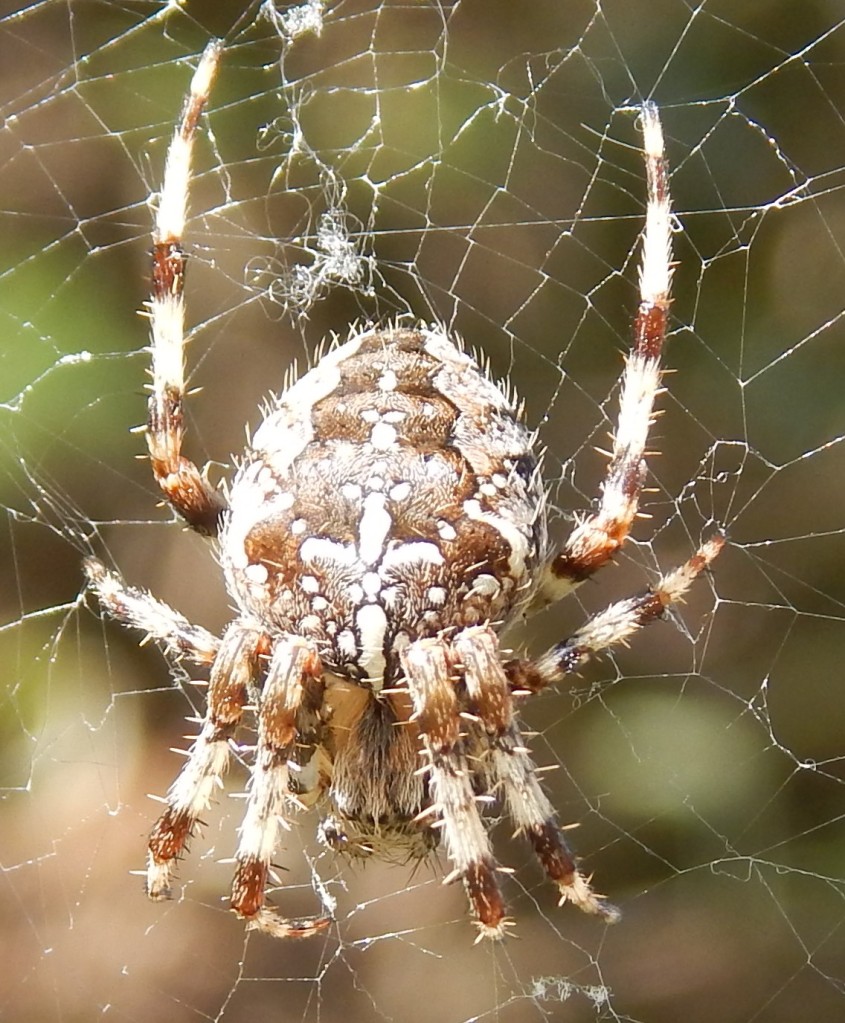
It is a classic orb weaver and is often seen in late summer and autumn just waiting at the centre of its circular web, woven between garden plants. When the prey flies into the web, the spider bites it to paralyze it, wraps it in silk and saves it to eat later. The header picture of this blog is not a good shot of the spider but it does show the web clearly. You may have to zoom in.
I won’t go into the courtship and mating rituals. Mating is external and the male has to be very careful. It is not unknown for the female to eat the male before, during or after mating.
Habitat
Araneus diadematus is widespread through Europe and America, common through almost all of Britain and is not restricted to gardens. They can be found almost anywhere in town or countryside. Garden flowers or other plants make useful points to attach their webs.
Other Notes
You may spot them through Summer and Autumn but they are most often seen in September and October. When they are waiting in the centre of a web, they are quite easy to photograph in close-up as long as you don’t touch the web. You may find it difficult with auto-focus, which often focuses on the background.
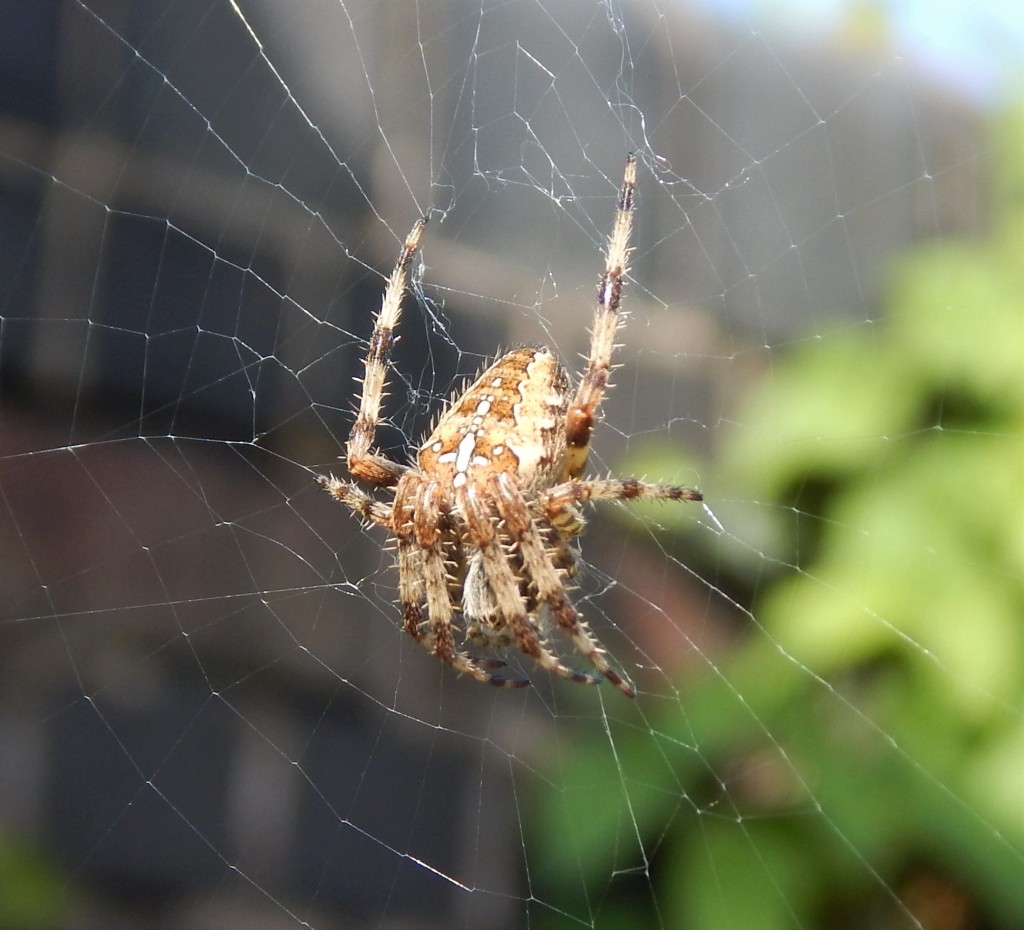
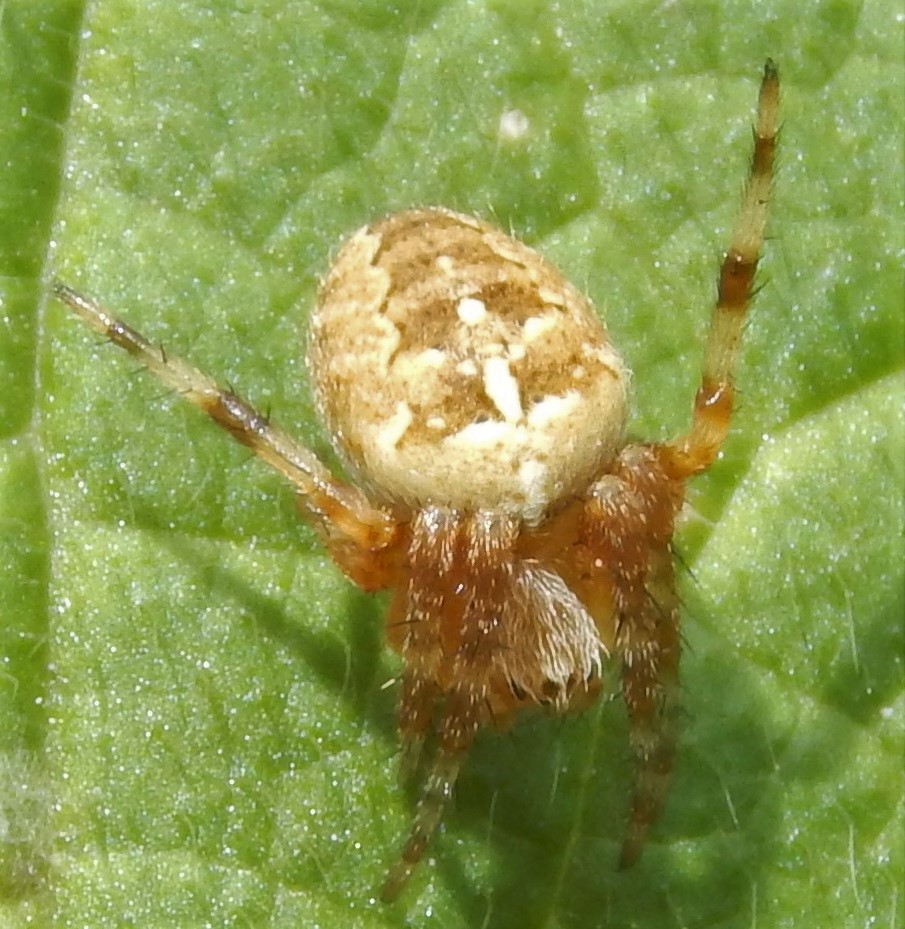
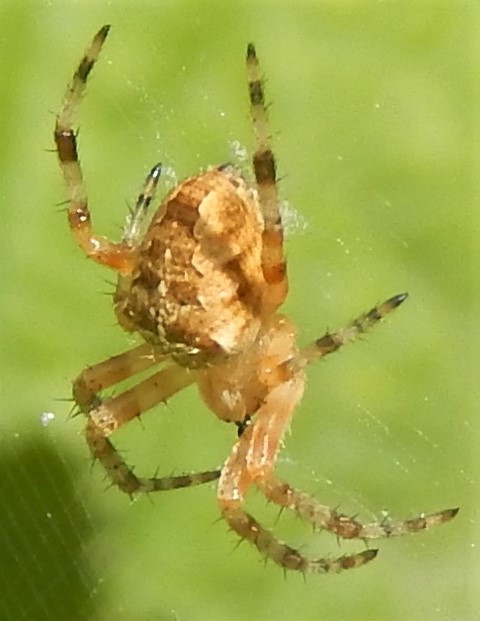
See also
I won’t give the game away but there are some more spiders to come. Actually, the next post will be a spider – or, to be more precise, lots of spiders …
